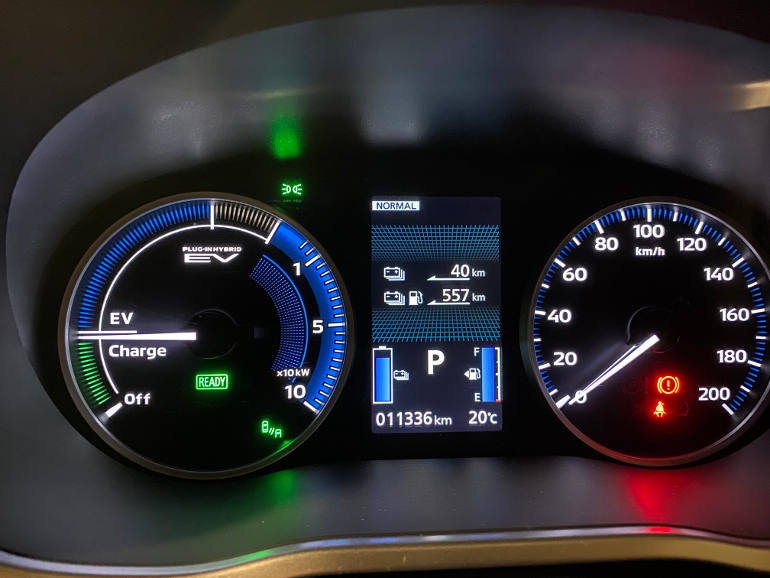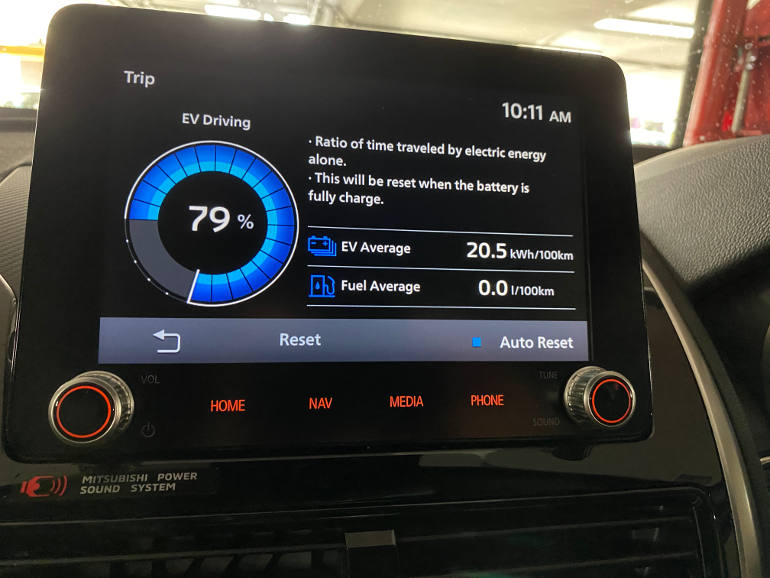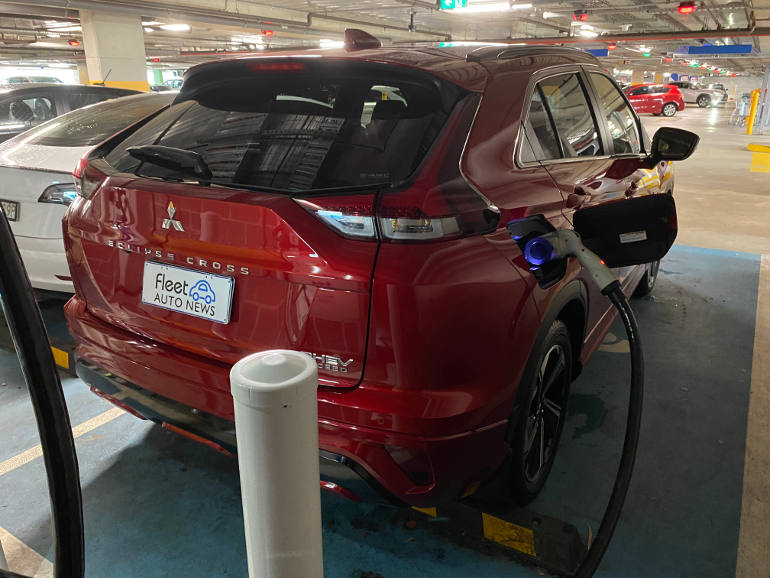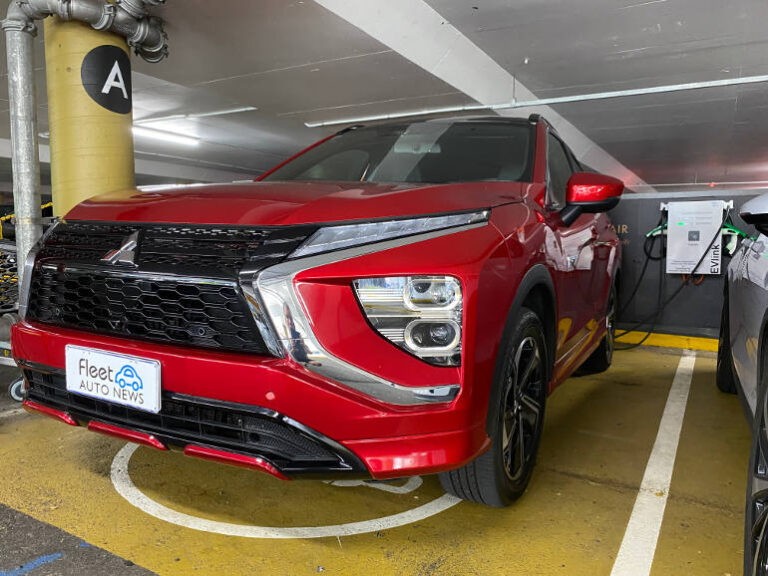I have a confession to make, when I went to pick up the Mitsubishi Eclipse Cross PHEV I jumped into an Outlander and drove off. The Eclipse Cross doesn’t get spotted in fleet car parks very often so I was defaulting to the model I knew by sight. I’m glad the mistake was rectified because I had a very pleasant week the Eclipse Cross.
It’s smaller than the Outlander with a different interior feel and style. Almost quirky at first because of the gear lever the button you need to push to select Park. And it’s sooooo quiet. I walked away without turning it off several times.
Being smaller was a good thing as I was commuting around inner city Sydney in January. Suddenly, I was noticing parking spots that would never allow a large SUV or dual cab ute. A trip to the beach was made very enjoyable when I squeezed into a small crevice of a parking spot in a prime position.
While it’s smaller in size, it’s not too small. It’s a perfect size for a family of four and would be great as a fleet car for sales people. At $50,490 driveway to retail buyers in NSW for the ES base model, it’s $10k cheaper than an Outlander with published fuel consumption at 1.9 L/100km and 43 g/km of CO2 when running with a full battery charge.
The battery size is 13.8kWh which isn’t bad for a PHEV from last decade. Mitsubishi claims it will give you 55km of silent commuting in EV mode. It was closer to 40km for me though plugging in each night via a standard household power point (and the odd top up at a shopping centre) had it fully charged and ready to go each day.
Even when I forgot to charge overnight, the Eclipse Cross PHEV drove like an EV. It was so smooth and quiet form inside the cabin. The CVT gearbox didn’t struggle at any stage and felt perfectly matched to the hybrid powertrain.
Looking at VFACTS new car sales for 2022, I can see why I didn’t recognise the Mitsubishi Eclipse Cross in the car park. It’s got four older brothers (Triton, Outlander, ASX, Pajero Sport) getting all the marketing support and the sales.
If supply isn’t a problem in 2023, I would be considering the Eclipse Cross as a low emission option for my fleet.



About PHEV technology
A PHEV charges using an electricity source rather than the vehicle’s internal combustion engine (ICE). The car can be charged overnight using a standard three-pin household plug and can drive in several modes, with its default mode being pure EV before switching to an economical hybrid mode for longer range. At no point does a Mitsubishi Motors PHEV operate solely from a combustion engine.






